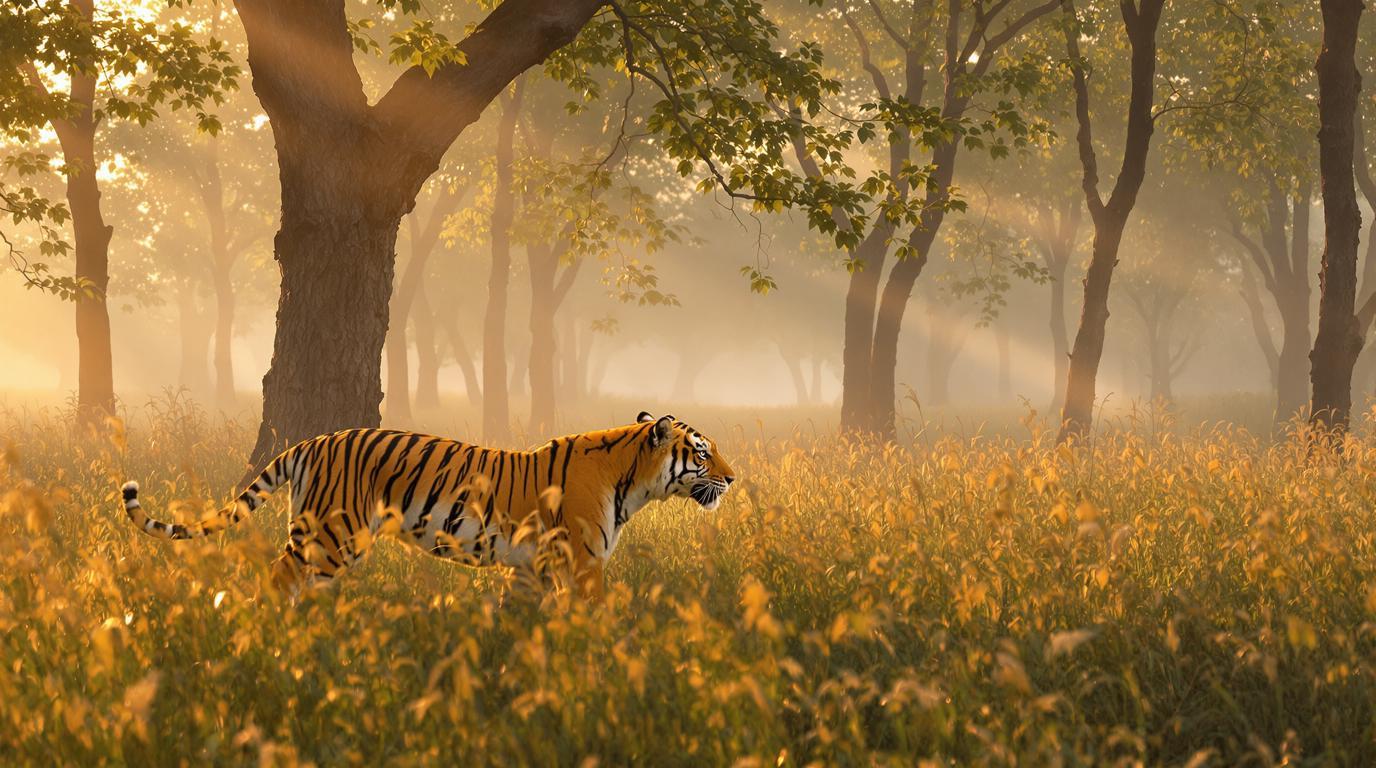Where Tigers Roam: 8 Hidden Reserves in India to Escape the Safari Crowds
The alternative tiger trails few travelers know about
While thousands of tourists crowd into Ranthambore and Jim Corbett National Parks each season, India harbors secretive tiger sanctuaries where you might be the only visitor tracking these majestic cats. These lesser-known reserves offer not just solitude but often superior wildlife experiences where tigers behave naturally, undisturbed by jeep convoys.
“When you’re alone in Pilibhit with just your guide and driver, tigers don’t retreat from safari routes like they do in crowded parks,” explains Rahul Singh, a conservation guide who’s spent 15 years tracking big cats. “They own these forests, and you’re just a respectful visitor.”
Pilibhit: The whispering grasslands of Uttar Pradesh
Just a five-hour drive from Delhi lies Pilibhit Tiger Reserve, where dense sal forests meet tall elephant grass and swampy marshes. The Sharda River meanders through this lesser-visited sanctuary that harbors not just tigers but also the critically endangered hispid hare. With significantly fewer vehicles than famous reserves, wildlife here hasn’t learned to avoid safari routes.
Morning safaris through misty grasslands offer almost spiritual encounters with these apex predators. Unlike in crowded European destinations, here the wilderness remains genuinely wild.
Satkosia: Boat safaris through dramatic gorges
Odisha’s hidden gem, Satkosia Tiger Reserve, delivers a safari experience unlike any other in India. Instead of dusty jeep rides, visitors glide silently along the Mahanadi River through India’s deepest gorge, spotting basking mugger crocodiles and, if extremely fortunate, tigers cooling themselves at the water’s edge.
The reserve spans two districts and represents one of India’s most ambitious tiger reintroduction programs. While sightings remain challenging, the breathtaking landscape alone justifies the journey.
Anamalai: Rainforests and rare macaques
In Tamil Nadu’s Western Ghats, Anamalai Tiger Reserve (formerly Indira Gandhi Wildlife Sanctuary) offers perhaps the most diverse ecosystem of any Indian tiger habitat. Here, lush rainforests meet rolling tea estates, creating a stunning backdrop for wildlife viewing.
While tigers remain elusive amid the dense vegetation, the reserve is famous for its endangered lion-tailed macaques and Nilgiri tahr. The sanctuary pioneered eco-tourism initiatives including ethical treehouse stays and guided night walks along buffer zones.
Nameri: Walking safaris in Assam’s wilderness
For the truly adventurous, Assam’s Nameri Tiger Reserve enforces a strict no-jeep policy. Instead, trained naturalists lead small groups on foot through the reserve’s rugged terrain, creating an experience that’s both exhilarating and humbling. The Jia Bhoroli River offers thrilling rafting safaris where visitors might spot elephants, leopards and, rarely, tigers.
This approach mirrors the transformative wilderness experiences found in European adventure destinations, but with apex predators adding a heart-pounding element.
Sahyadri: Misty mountains and rare civets
Maharashtra’s Western Ghats hide Sahyadri Tiger Reserve, a mountainous sanctuary of mist-covered hills and deep valleys. While tiger populations here remain smaller than in central India’s reserves, the biodiversity is remarkable.
Home to the endangered Malabar civet and Indian pangolin, Sahyadri offers trekking experiences that combine wildlife observation with spectacular mountain vistas. Like hidden Mediterranean gems, this reserve remains surprisingly crowd-free.
Buxa: History and wildlife intertwined
West Bengal’s Buxa Tiger Reserve in the Dooars region shares a border with Bhutan and features dense forests, hilltop ruins, and a fascinating historical twist—an abandoned British-era prison. While tiger sightings can be challenging, the combination of colonial history, spectacular birdwatching, and pristine forests makes Buxa uniquely compelling.
“Buxa represents India’s complex relationship with tigers,” notes historian Priya Chatterjee. “This former prison now protects creatures that were once hunted to near extinction. It’s a remarkable transformation story.”
Pakke: Birdwatcher’s paradise in Arunachal
The remote Pakke Tiger Reserve in Arunachal Pradesh remains one of India’s least visited yet most rewarding wildlife destinations. Known for its abundant birdlife and kaleidoscopic butterflies, Pakke offers a cultural immersion reminiscent of hidden historical capitals—the local Nyishi tribe plays a crucial role in conservation efforts.
Dampa: Mizoram’s bamboo wilderness
Perhaps India’s most obscure tiger habitat, Mizoram’s Dampa Tiger Reserve features bamboo groves, dense forests, and a serenity rarely found in wildlife tourism. While tigers remain incredibly elusive here, the untouched environment and unique cultural context make it a frontier experience for determined wildlife enthusiasts.
Like remote tropical islands with perfect temperatures, Dampa offers a genuine escape from the modern world.
These eight reserves represent India’s wild heart—places where conservation succeeds quietly, away from the spotlight. For travelers willing to venture beyond established circuits, they offer something increasingly precious: authentic wilderness experiences where tigers still reign supreme.
